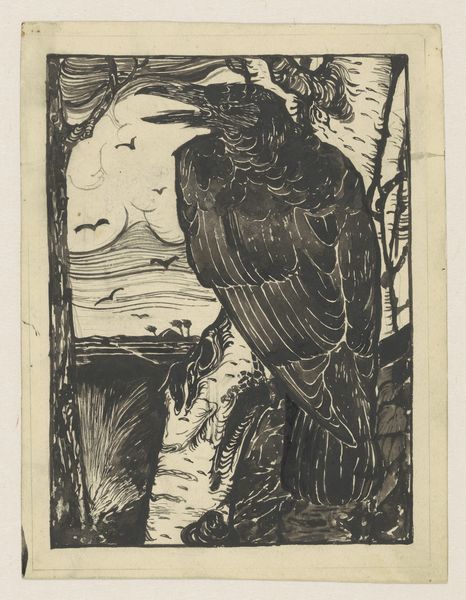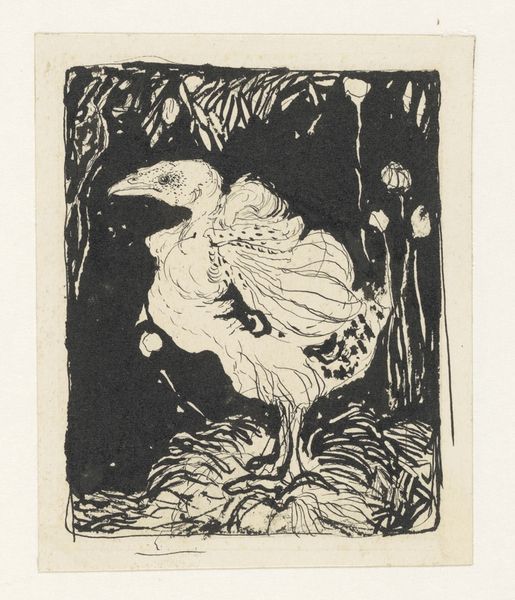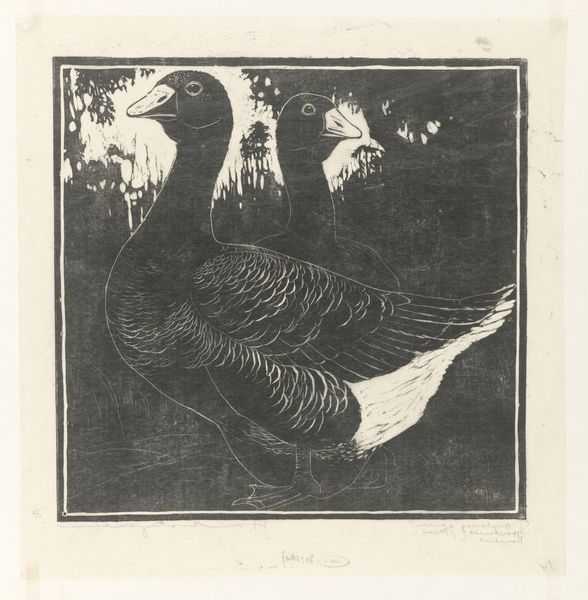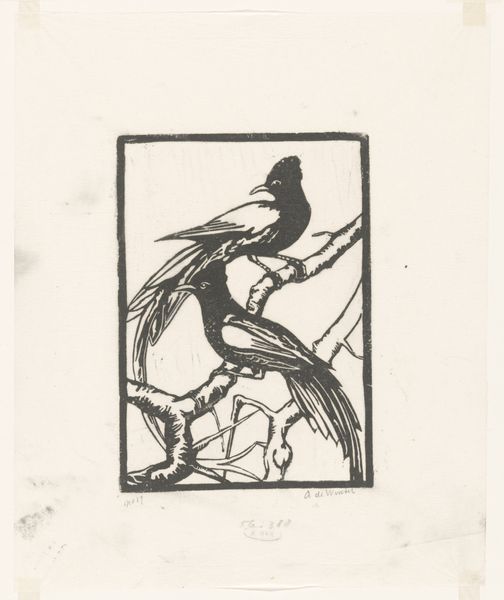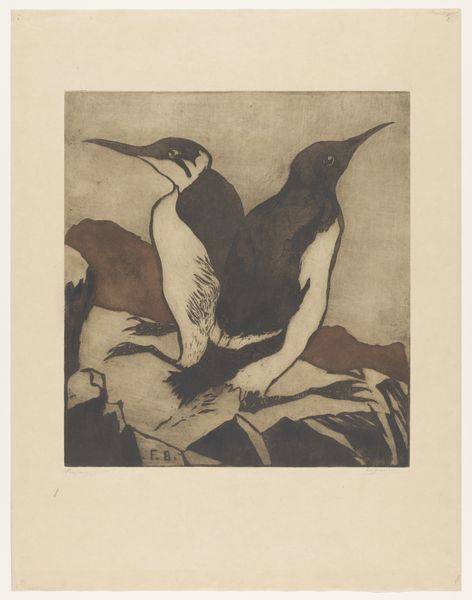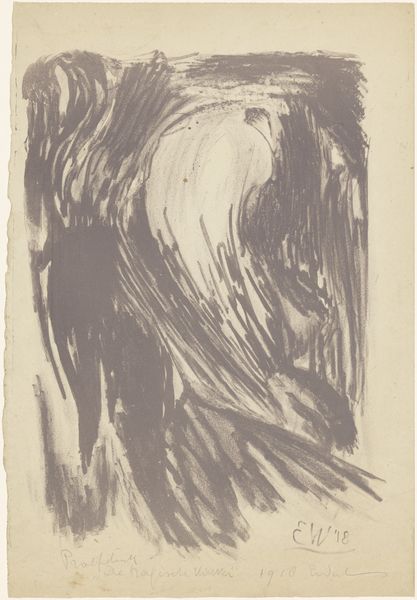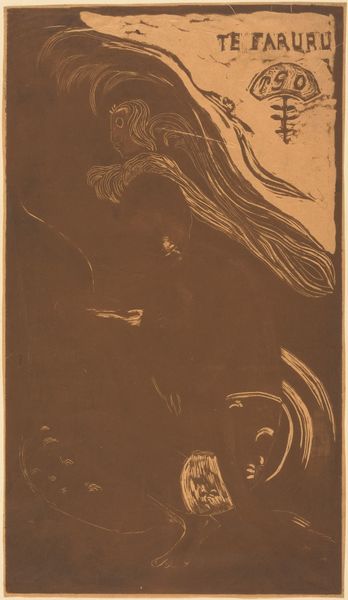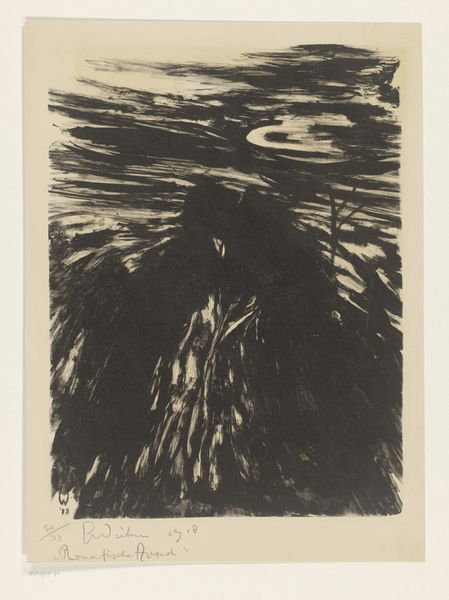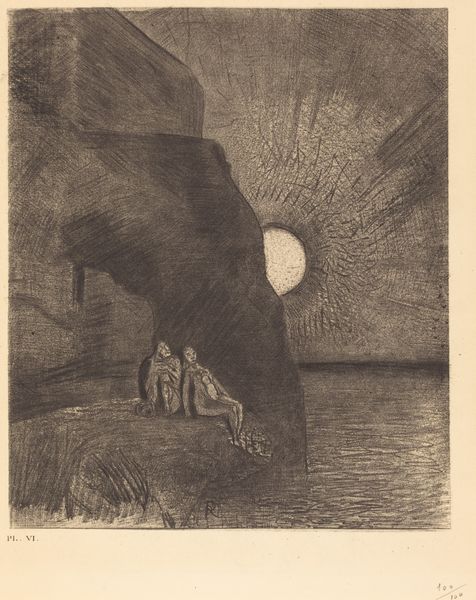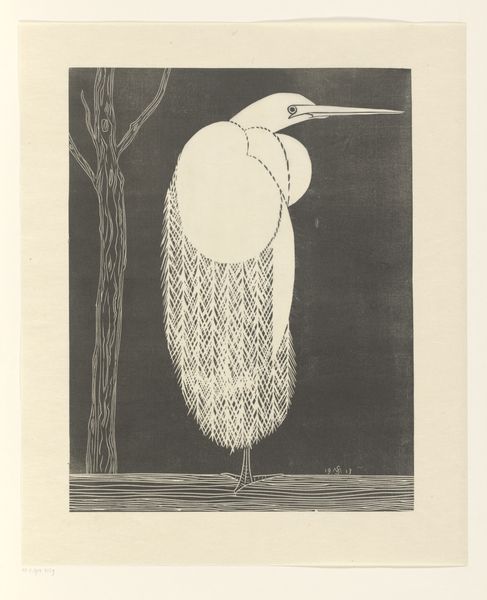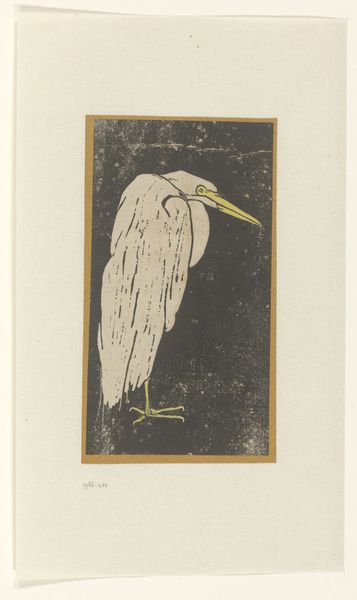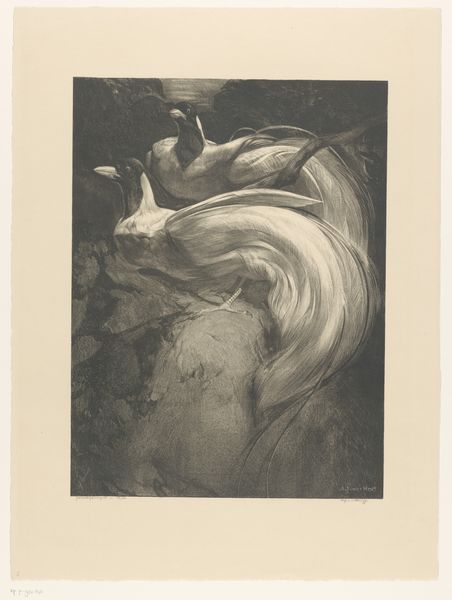
Copyright: Public domain
Editor: We're looking at Jan Mankes' "Raven on birch tree," made in 1913. It's a woodcut print, and what immediately strikes me is how stark and somewhat ominous it feels, this big black raven against the pale wood and sky. What do you see in this piece beyond its obvious imagery? Art Historian: Well, this piece resonates deeply when considered through the lens of early 20th-century anxieties. Mankes, working amidst the burgeoning modernist movements and the shadow of impending war, offers us more than just a simple depiction of nature. The raven, historically a symbol of ill omen and death, positioned starkly against the birch – a tree often associated with renewal and purification – creates a potent visual dichotomy. Do you think this tension speaks to something larger about the time? Editor: It's interesting you mention that. I was mostly thinking of it aesthetically, but knowing the historical context definitely changes things. It feels like a reflection of uncertainty, a visual representation of clashing ideologies maybe? Art Historian: Precisely. Mankes' choice of the woodcut medium is also telling. It's a deliberately archaic technique, hearkening back to the Northern Renaissance, a period marked by religious and social upheaval. Consider the stark black and white contrast, the almost brutal simplicity of the lines. This isn't just about portraying a raven; it's about using that imagery to tap into deep-seated cultural fears and anxieties regarding societal transformations and the loss of innocence. Where does the bird seem to sit with this symbolism? Is it triumphant, accusatory, or a messenger? Editor: I never thought about it that way. So it's less about a literal bird, and more about… cultural anxieties made visible. I see the raven’s accusatory gaze now. Art Historian: Exactly! Recognizing the artistic, historical, and political significance empowers us. Seeing the intersectional stories and historical narratives behind what we are looking at is really interesting, don't you think? Editor: Absolutely, I see it so much clearer now. Thank you!
Comments
No comments
Be the first to comment and join the conversation on the ultimate creative platform.
